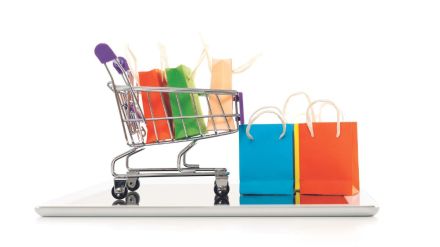Amazon India recorded 28% growth in advertising revenue in FY23 to reach Rs 5,380 crore from Rs 4,171 crore; ad revenues for Flipkart Internet, the marketplace arm of Flipkart, grew 60% in FY23 to reach Rs 3,325 crore.
Advertising monies are increasingly being parked with conversion-based platforms like e-commerce and even social media channels like Instagram, which have made themselves commerce-friendly, putting search in the eye of the storm.
Quod erat demonstrandum.
If earlier the ratio of search to e-commerce spends was 75:25, the needle has moved to a “60:40 situation”, say experts.
Shashank Rathore, vice-president, e-commerce at Interactive Avenues, says there has been a notable upsurge in FMCG, food and beverage and grocery categories in quick commerce. That and changes in consumer shopping behaviour are compelling even traditional brands to prioritise commerce. “Brands are allocating 30%-40% of their digital budgets to commerce, and this is expected to increase,” he says. Remember that while urban-focused brands like Hershey’s, The Man Company, and Dyson focus on commerce, mass brands have been more cautious.
Aside from a positive ROI (return on investment), the other most significant factor is that e-commerce has been seeing a robust adoption rate, growing at 30-35% year-on-year, surpassing the 10-12% growth of modern trade .
As per a Bain report, the online shopper base in India was 180-190 million in 2021 and is expected to reach 400-450 million by 2027, taking the e-commerce industry to $150 billion. “E-commerce provides brands with the opportunity to engage with a huge customer base. With commerce advertising, companies can even see sales on the same day as the ad’s release and they can also gather data on consumer behaviour for future sales insights,” observes Shradha Agarwal, co-founder and CEO, Grapes.
Shantanu Bhattacharyya, senior VP, digital strategy planning & client success, LS Digital, adds that e-commerce advertising allows customers to engage with ads without disrupting their online experience. “Robust analytics in e-commerce systems enable effortless conversion tracking and measurement. This enhances visibility, especially for lesser-known brands,” says Bhattacharya.
According to Manan Malik, director of strategy and growth at Social Panga, “Marketplaces also help achieve better ROAS and conversion rate, as the cost of consumer acquisition is lesser compared to the search ads.
Shopping online
So is search under serious threat? Not immediately, say experts.
Interactive Avenues’ Rathore maintains that search continues to remain potent for new entrants and brands with substantial budgets, capturing attention during the initial phases. “Although search can be relatively expensive in terms of ROI, its effectiveness in capturing attention during the initial phases of the shopping journey is unparalleled. While search spends have decreased in the last two years, search capabilities have guided users through every phase of the purchase cycle. Users now conduct research on search but make evaluations, purchases, and repurchases on commerce platforms,” he remarks.
The blend of efficiency, reach, and data-driven insights makes e-commerce an attractive option for brands across diverse industries, from fashion and FMCG to healthcare and electronics, explains Mitesh Kothari, co-founder and chief creative officer, White Rivers Media. “While search advertising excels at capturing active intent, e-commerce allows brands to engage early, nurturing awareness and consideration at lower costs. As the space evolves, innovation like AI personalisation and shoppable video ads will drive seamless purchases, pushing the ecosystem forward,” he states.
E-commerce platforms are also pushing the envelope in terms of innovations and new advertising models. An Amazon spokesperson says the way brands reach their audiences tomorrow will look completely different from what it does today. Amazon is adopting model-based solutions that create an informed understanding of the audience while ensuring results.
Investments in the area will grow since advertisers now have to adapt to a future without third-party cookies. Also, advertisers using Amazon delivery service platform now have access to more advanced machine learning models and optimised campaign control systems to enhance bidding and pacing decisions that help advertisers reach previously un-addressable audiences.
